#Chumayel
Explore tagged Tumblr posts
Text
The Book of Chilam Balam of Chumayel
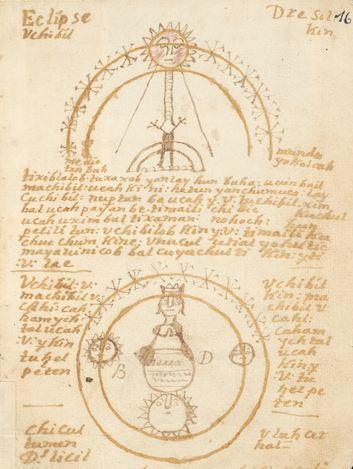
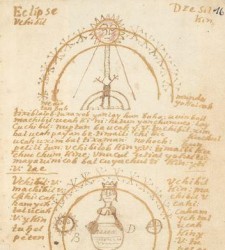
The Book of Chilam Balam of Chumayel The Book of Chilam of Chumayel by Ralph L. Roys was published in 1933. The Books of Chilam Balam are the sacred books of the Maya of Yucatan and were named after their last and greatest prophet. Chilam, or chilan, was his title, meaning he was the mouthpiece or interpreter of the gods. Balam means jaguar, but it is also a common family name in Yucatan, so the title of the present work could well be translated as the Book of the Prophet Balam. During a large part of the colonial period, and even down into the Nineteenth Century, many of the towns and villages of northern Yucatan possessed Books of Chilam Balam, and this designation was supplemented by the name of the town to which the book belonged. Dowload the free ebook here:

Book of Chilam Balam the of Chumayel
What is The Book of Chilam Balam of Chumayel about?
The Book of Chilam Balam of Chumayel is one of the surviving texts from the Maya civilisation in present-day Mexico, primarily written during the late Postclassic period of Maya history (circa 1300-1697). The "Books of Chilam Balam" are a collection of nine related manuscripts, with the Chumayel being one of the most studied and notable. Yucatec Maya authors wrote the Chilam Balam texts after the Spanish Conquest, and they contain a mix of mythology, prophecy, history, and herbal medicine. The name "Chilam Balam" translates to "Jaguar Shaman" or "Priest," and is associated with the ancient tradition of prophecy among the Maya. Here are key elements that the Book of Chilam Balam of Chumayel, like others in the series, typically encompasses: - Historical Chronicles: These sections often relate the history of the Maya people from their early migrations to the Yucatan up to the times during and after the Spanish Conquest. It reflects the turmoil and changes that came with colonization, including the introduction of Christianity. - Prophecies: The books are perhaps best known for their prophetic aspects. The Chilam Balam texts include predictions about the Maya people's future and the Spaniards' coming, often written in a symbolic and poetic style. These prophecies, sometimes written as if made before the events occurred, often merge pre-Columbian religious beliefs with Christian elements. - Rituals and Ceremonies: Detailed descriptions of certain Maya rituals and religious practices are also included. These give insight into the post-conquest fusion of Christian and traditional Maya religious practices. - Astronomical and Astrological Texts: The Maya were accomplished astronomers, and the Chilam Balam books continue this tradition by including various charts and tables, often of an astrological nature, predicting the fate of the community based on the movements of celestial bodies. - Medicinal Recipes and Folk Remedies: The texts include a variety of medical knowledge, listing herbal remedies, and traditional practices for treating various ailments. - Transliteration of European Events and Practices: Some parts of the texts involve transliterations of Spanish or Christian terms, events (such as Christian religious stories), and calendars, reflecting the complex cultural synthesis that occurred in the centuries following the conquest. The original text is in Yucatec Maya, written using the Latin script taught by Spanish missionaries. The Book of Chilam Balam of Chumayel, like the other books of Chilam Balam, represents a critical source for understanding pre-Columbian Americas, offering a unique perspective on the synthesis of Spanish and Maya cultures and the resilience of Maya civilization and thought despite the profound disruptions of the colonial period. Read the full article
1 note
·
View note
Text
20 años de servicios y solidaridad a través del esquema “Hoy en tu Comunidad”
La UADY fortalece vínculos y lleva servicios gratuitos a las comunidades del interior de Yucatán Mérida, Yuc 19 de nov.- El Programa Institucional de Voluntariado de la Universidad Autónoma de Yucatán (UADY), celebra 20 años del esquema “Hoy en tu Comunidad”, para lo cual se realizó la visita número 345 y la develación de una placa en el municipio de Chumayel, además en el mes de diciembre se…
0 notes
Text
“Tan cochhom uii i; tan cochhom uah i.”
“It was halfway famine; it was halfway feast.“(Chumayel)
youtube
1 note
·
View note
Photo

No tengo muchas palabras, más que me la pasé súpeer ! 😎🏊 #Friends #cenote #chumayel #puebleando https://www.instagram.com/p/Bw8jFBrAA1SEt8xw917vHzGKlgIPgNleMz1Nf00/?utm_source=ig_tumblr_share&igshid=zqtjdwnbzz76
0 notes
Text





The Book of Chilam Balam of Chumayel. Written in Yucatec Maya with the Latin alphabet, 17th-18th Century.
4 notes
·
View notes
Note
Is the Bolontiku having the same stats and opposite skills as the party meant to mean something? During the fight Jun says "they share the same stars" as them and then after they mention Juns "dad" and Maya talks about her Shadow and other "her" created by rumors (the ghost) So are the Bolontiku like the Shadows and ghost meant to be other "thems?" And if so are the ghost and aliens also meant to be shadows born from aspects of the characters similarly to the ones born from the terrorist rumors?



The Bolontiku as well as the room are stated to come from Okamura‘s mind by both Jun and Eikichi.








It‘s just further deluding Okamura into thinking that Kashihara‘s theories are true. Namely that the Bolontiku (Mayan underworld gods) and the Oxlahuntiku (Mayan sky gods) were actually Maian alien tribes and that the Bolontiku alien tribe destroyed the Oxlahuntiku tribe.

What she and Kashihara very likely read is described in the book of Chilam Balam of Chumayel which says that a Bolontiku-Oxlahuntiku conflict created a flood. (The Ixquic story comes from Popol Vuh thus Tadashi definitely looked at several Mayan texts to get several ideas.)
Also notice that Baofu compares Xibalba to Noah‘s arc in a comment which is another flood reference.
There is also the merging of Mayan culture and Aztek culture and Mayan culture and Christian culture in IS that should be mentioned.
The Chilam Balam is a Mayan text that blends in Christian themes as well.
The new age expression In Lak'ech (You are my other I) is also a mixture of Mayan and Christian themes due to the connections to Hunab Ku (who also appears in P2 as a Persona).

Nahui-Ollin is from the Aztecs actually.

What Maya mentions here (sacrificing hearts so that the sun doesn‘t go out) is also associated with the Aztecs actually.


In Mayan mythology there are nine Bolontiku underworld gods. In fact before the fight you see that there are actually more than the five you fight namely if you count them there are nine.


I think that the five of them that attack you merely have the same special attacks your party has in a dark version (what actually the Shadows in IS and EP usually do or the Metal Trio in EP), to portray the Bolontiku as mind created extraterrestrials due to the Milky Way entrance to Xibalba connection, Xibalba where the Bolontiku rule depicted as a space ship and due to the real life weird theories about Mayans and aliens (‚Did aliens build their pyramids‘ etc.)
In Okamura‘s delusion the Bolontiku took part in an intergalactic civil war, destroyed the Oxlahuntiku and their actions also took their toll on the entire solar system thus them trying to be foils to your characters since they are said to want to finish off other tribes/species etc. makes sense to me.
As for what Maya says after the fight:








After the fight Maya‘s musing is about how fake Kashihara was created.

She compares it to how twisted views about the party created the Shadows or how teenage ghost Maya was created since there were rumors about Maya‘s fate after the Araya shrine incident.

She mentions about Okamura that Okamura is still hung up over the past which is why this room and the aliens were called forward.
60 notes
·
View notes
Photo

#sar24 #chumayel #yucatán #diciembre 27 (en Chumayel)
0 notes
Text
Mayan History (Part 22): Crime
The worst crimes were those against society - especially the society formed by your own group or clan. Mayan peasant houses had no doors or locks, and so anyone could enter. Burglary was a crime against your own kin, and considered disgraceful. The thief had to make restitution, either by returning the stolen goods, or paying for them. If he couldn’t do this, then he worked for the victim until the debt was paid off (becoming a temporary slave). A second offence was punished with death.
Murder and manslaughter were treated the same. Killing another person was an offence against the whole clan, and the offender was put to death.
In the same vein, intent was irrelevant for damaging or breaking someone else’s property. If you broke someone’s storage pot or tool, for example, you had to buy another to replace it, accident or not.
Adultery was also a serious crime. A man had the right to drop a rock on his wife’s lover’s head to kill him. Probably the wife didn’t have the same right. There would have been an element of wife-as-property in the man’s right.
The K‘iche’ Maya (in the highlands) sometimes punished the wife too if her husband committed adultery - they believed that she was partially at fault for not keeping him content at home. They also believed that the spirits of their ancestors watched over them, and tried to stop them from committing crimes.
When Yucatán was invaded by the Itza & their Mexican allies in the 900′s AD, they were furious not just because of the cruelty and killing, but also because of the consequences of the invaders’ behaviour & code of conduct. Once order, discipline and correct social behaviour was gone, they believed that all sorts of terrible things would happen because of it. The Book of Chilam Balam of Chumayel says:
...they brought shameful things when they came. They lost their innocence in carnal sin...This was the cause of our sickness also. There were no more lucky days for us; we had no sound judgement. At the end of our loss of vision and of our shame everything shall be revealed.
#book: everyday life of the maya#history#military history#maya#mesoamerica#mexico#yucatán peninsula#guatemala#belize#honduras#k'iche' maya#itza people#book of chilam balam of chumayel
1 note
·
View note
Photo

Municipio de Chumayel en #Yucatán Al fondo se observa la iglesia de la inmaculada Concepción. #México #Turismo #TuriMexico Foto: @verdeguillen (en Chumayel, Yucatan, Mexico) https://www.instagram.com/turimexico/p/BvuQqV5BCHC/?utm_source=ig_tumblr_share&igshid=1kcg9ithmgsdx
7 notes
·
View notes
Text
Vínculo a Chilam Balam de Chumayel En el Chilam Balam de Chumayel, texto de finales del siglo XVIII del norte de Yucatán, la creación comienza con un universo cautivo de los dioses del inframundo, poblado por abejas. Según el relato, fue una época en que llovió fuego y ceniza, y en que cayeron árboles y piedras. En un mundo sin Sol, sin noche y sin Luna, los dioses del cielo, decididos a propagar la semilla que habían salvado de ese caos, destruyeron todo bajo un diluvio y flecharon a quienes habían quedado. A partir de ese universo aniquilado habría de comenzar la nueva creación: los cuatro bacab, dioses sostenedores del cielo, colocados uno en cada esquina del mundo, levantaron la tierra que se había hundido al desplomarse el firmamento y sembraron una ceiba al centro: axis mundi del universo maya y camino que conduce al cielo.
(Source)
0 notes
Text
LOS ITZAES: LA SERPIENTE LUNAR
CHICHEN ITZA “El espíritu del hombre dice: ¿Somos alguien? ¿Somos alguien? Esa es la palabra del espíritu del hombre. Adivínalo, sabio. Yo fui engendrado en la oscuridad, de ahí nací. ¿0 tampoco esto es verdad?” CHILAM BALAM de Chumayel, escrito en lengua maya yucateca La tierra de los itzáes, esos “brujos o adivinos del agua” que se supone emigraron del Petén en Guatemala y fueron…

View On WordPress
0 notes
Note
What is katun 2 ahau? I saw you mention it and am quite curious
Sorry for taking such a long time to answer this question. Meant to answer it a few ago, which then became weeks ago, except then I got busy.
K'atun 2 Ahau comes from Mayan/Mesoamerican cosmology. I’m not thoroughly familiar with Mayan cosmology & astrology, but I happened to read an e-book by Kenneth Johnson about the Mayan Long Count calendar back when everyone was freaking out about 2012. Kenneth Johnson is a western astrologer, a Vedic astrologer, and now a Mayan daykeeper. Anyhow I read his e-book, The Mayan Prophecies: The Renewal of the World 2012-2072, seven or eight years ago. (If you’re interested in it, you can still buy it on his online store for $8. It’s basically a pdf, so you can read it on anything. I recommend getting it if you’re interested because it’s an easy read and not expensive.)
Anyhow, when I saw this post, it reminded me of Parasite, Bong Joon-ho’s movie, due to the mention of South Korea. I haven’t seen Parasite yet, but I do know it’s about capitalism, class, and greed just based on things I’ve seen mentioned about it.
Which I suppose brings me to a (hopefully coherent) explanation of K'atun 2 Ahau. A K'atun is a unit of time that is close to twenty years. It’s part of the Mayan Long Count. In Kenneth Johnson’s book, he goes over in detail the Mayan Long Count and how it’s calculated. In the last part of that book, he writes his opinion of what he thinks the next 60 years would be using the Mayan Long Count and world history. And you can use world history for the basis of prediction because each K'atun has a different focus and saying attributed to it.

I mean, at the very beginning of the book, KJ lists this quote: “Pathih hun ten e; bey he u patal u lac e. It could happen once; the like could happen again.” ~ Yukatek Mayan Proverb
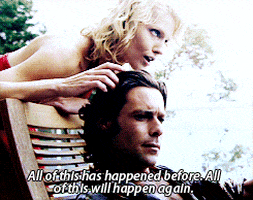
Due to how the Mayans kept records, you can use the dates of prior K'atuns to see what historical events correspond to each K'atun. K'atun 2 Ahau has occurred in previous history from 731 to 751, 1500 to 1520, and 1756 to 1776. There are other occurrences prior to 731; however, the written record is much more sparse and provides less of an ability for comparison.
The translation for the associated saying by Chumayel for K'atun 2 Ahau is: “It was halfway famine; it was halfway feast.” Now, you have to remember that this is trying to convey an idea with poetic metaphor and can’t necessarily be taken literally. Kenneth Johnson gave a subtitle to the period as “The Haves and the Have Nots.” He then examines the previous periods I listed above and the notable societal inequities that occurred.
And that’s why I mentioned K'atun 2 Ahau. Because there is massive societal inequity happening in the world; you can see signs of it everywhere. Now, this is not to say that social inequalities did not exist prior to this period, but instead these issues are certainly more prominent and pervasive now than they were ten years ago.
In his book, Kenneth Johnson mentions the Occupy Movement that was happening as he was publishing this book. I would point out that Pope Francis was elected to the papacy in 2013, which is after this K'atun began. I’d say both of those things are indicative that Johnson was correct in pointing out that we are in K'atun 2 Ahau.
In Vedic astrology, often the Jupiter-Saturn conjunctions are used to determine general societal trends. They currently don’t align with the Mayan K'atuns since the next one happens later this year in 2020. But when reading or listening to what other Vedic astrologers have to say about future trends, I think what Johnson has written provides more clarity on the situation we’re all in. Part of that is also because while you can get a lot out of going through the individual country charts like James Kelleher does. (He does an excellent one every year, and I recommend checking it out if you’re interested.) However, sometimes I feel that certain things are still unacknowledged in that process, and I think what Kenneth Johnson has written about the next sixty years based on his own opinions and research has helped fill out the gaps.
This is probably a LOT longer than you were expecting or asking for. But these are some of the things I had in my mind when I made that comment. Also, it’s been on my mind a little bit more recently since I had a text conversation with a friend/acquaintance who does/follows mainly western astrology but has an interest in Vedic. She’s very comfortable with the status quo and can’t understand why people aren’t interested in having an actual oligarch–Mike Bloomberg–as US president. I mean, we’re talking 1788-Versailles-France mentality. I wanted to tell her that she doesn’t seem to understand how many people in the US are #eattherich already.
Perhaps that’s the most clear example I can think of. Many people in power think the status quo is perfectly fine. Plenty of other people are, like, fuck the system; we need change. And let me tell you, if things don’t change or the inequities aren’t addressed, then change will be forced on people. The next K'atun is not a peaceful or tranquil one.
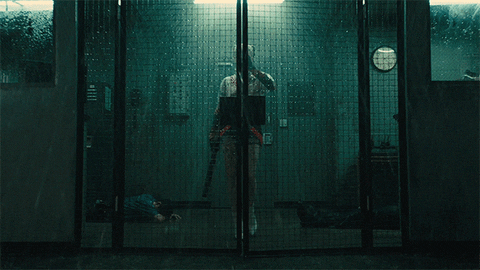
#ask#Mayan cosmology#astrology#vedic astrology#movies#inequality#wealth inequality#income inequality#USA#election 2020#oligarchy#history#ancient history#the future
7 notes
·
View notes
Text
Corrida de Toros :
Chumayel :
Entrada : Lleno.
Toros : Quiriceo : De buena presencia y buen juego.
📍Marc Serrano : Oreja y Dos orejas.
📍Michelito Lagravere : Dos orejas y Oreja.
#grandestoreros #enhorabuenatoreros #Chumayel #Quiriceo #MichelitoLagravere #MarcSerrano #Toros #Tendido_5
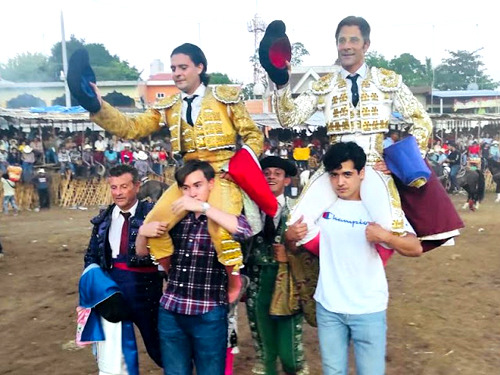
0 notes
Text
Doña Marta y Paulina en el bautizo
*Se sientan en sillas de latón, cada una con un platillo que incluye un tamal y una rebanada de pastel.*
- Y cómo ha estado doña Marta?
- Pues bien mija, no sé si supiste que me divorcié de Julián hace como dos meses.Paulina se hace la sorprendida pero lo veía venir desde hace como un año.
- ¿Ay de veras? Qué mala onda... ¿y está usté bien?
- Ay mija, mejor que nunca, ya era mucho estar aguantándole sus cosas. La verdad mejor sola que mal acompañada.
*No le cree, le nota el ojo Remi.*
- Ah, pues qué bueno por usted doña Marta, además la neta se le ve muy bien.- Gracias, la verdad ahora me dedicaré a mi cuerpo, a meditar, a comer lo que quiera y viajar. No sé si te comenté pero las muchachas de la cuadra están organizando una excursión para ir a ver al Cristo de Chumayel, ya ves que dicen que es bien milagroso.
- Qué bueno doña Marta. ¿A' me trae un escapulario? Se lo pago.
- Ay no cómo crees, yo te lo traigo pero no me tienes que dar nada.
*Comienza a sonar reguetón, doña Marta posa su tamal sobre la silla de latón y se para a bailar.*
- Perdón mija luego hablamos, es que esta canción me encanta...
*Paulina observa a doña Marta con admiración y una ligera pena ajena. Se mete un trozo de tamal embarrado de merengue a la boca.*

1 note
·
View note
Text

No existía el tiempo, entonces llego el Chuwen B’atz y se hizo así mismo y entonces empezó el tiempo sagrado, empezó a caminar desde ahí.
B’atz fue el primer día del tiempo, el primer día de la cuenta dice el Chilam B’alam de Chumayel.
Es un honor para nosotros anunciarles la celebración del gran Waqxakib’ B’atz, año nuevo sagrado ceremonial maya este 15 de marzo 2022.
Si usted gustaría saber toda la información sobre esta sagrada festividad maya lo esperamos en:
https://mayatecum.com/waqxakib-batz-anyo-nuevo-sagrado-maya/
0 notes
